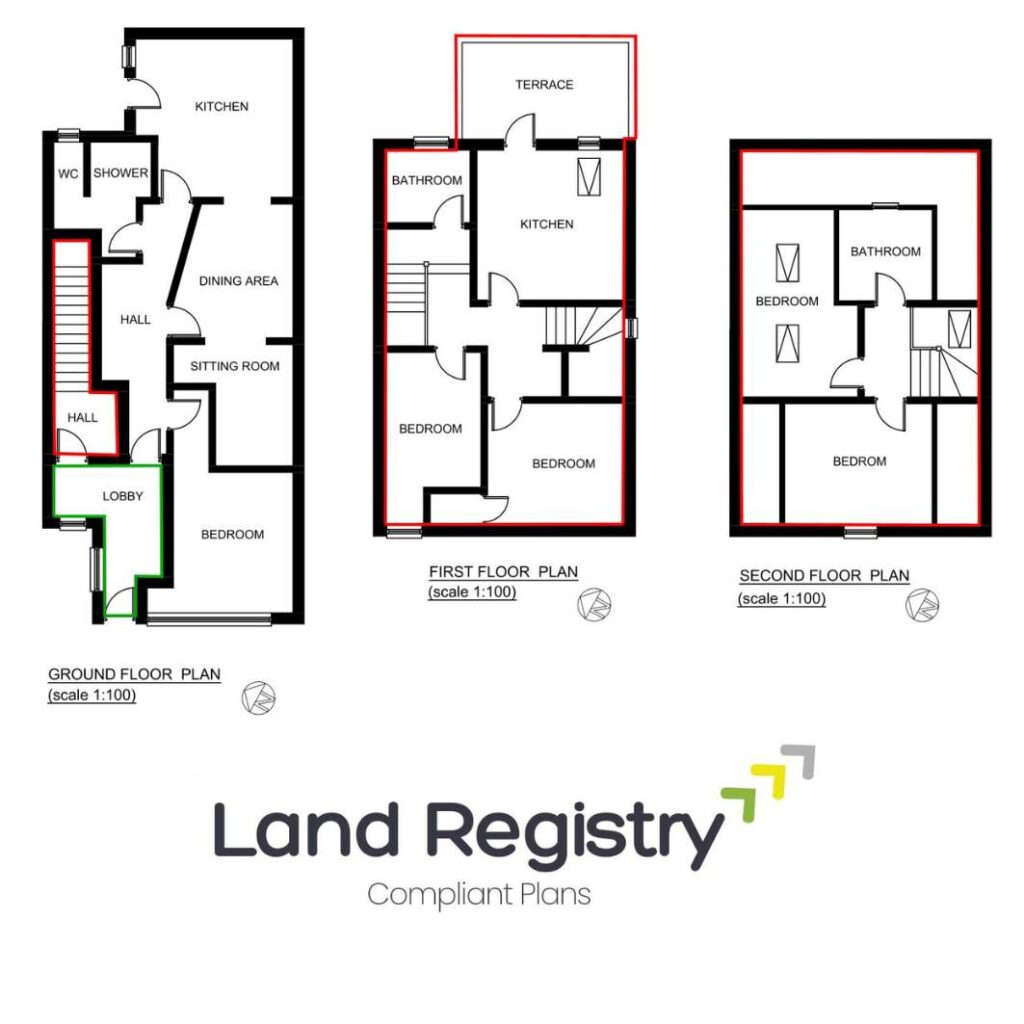The Land Registry Hub: Your Go-To Guide for Property Plans & Conveyancing
🛠️ Navigating the world of Land Registry, lease plans, title plans, and conveyancing can feel like a legal maze—but don’t worry, we’ve got you covered! Whether you’re a property owner, landlord, solicitor, or just someone trying to make sense of UK property rules, this blog is your one-stop resource for clear, practical advice.
From understanding lease plans to avoiding common conveyancing pitfalls, we break it all down in a way that’s easy to follow. Stay tuned for expert insights, tips, and updates to keep you ahead in the property game! 🏡📜✨

Land Registry Compliant Plans
How to Ensure Your Title Plan is Land Registry Compliant
If you’ve ever bought, sold, or transferred property in the UK, you’ve probably come across something called a Title Plan. It might look like just another map, but trust us—it’s way more important than that.
A Title Plan is a legally binding document that defines the exact boundaries of your property, and it’s used by HM Land Registry to confirm ownership. If it’s not accurate or compliant, you could run into all sorts of headaches—delays, disputes, or even rejection from the Land Registry.
So, how do you make sure your Title Plan meets Land Registry standards? Let’s break it down.
What is a Title Plan?
A Title Plan is an official scaled map that outlines the land and property registered under a specific title number. It’s designed to show:
✅ The exact boundaries of the property
✅ The general location within the surrounding area
✅ Any rights of way, shared access, or restrictions
It works hand-in-hand with the Title Register, which contains ownership details, lease information, and any legal restrictions.
👉 Fun fact: If you own multiple parcels of land under one title, they’ll all be shown on the same Title Plan.
Why is a Title Plan Important?
Your Title Plan is crucial when it comes to:
📌 Selling or transferring property – Buyers and solicitors rely on it to confirm exactly what’s being sold.
📌 Mortgage applications – Lenders may check the Title Plan before approving a loan.
📌 Boundary disputes – If there’s ever a disagreement with your neighbour, your Title Plan is one of the first things you’ll need to refer to.
📌 Planning permissions & extensions – If you’re making changes to your property, the Title Plan helps determine whether you actually own the land you want to build on.
Without an accurate Title Plan, these processes can quickly turn into a nightmare.
What Are the Land Registry’s Title Plan Requirements?
Not just any map can be used as a Title Plan—it has to meet specific requirements set by HM Land Registry.
A Land Registry-compliant Title Plan must include:
✅ A clearly defined boundary – The property’s boundary must be outlined in red. Any shared or leased areas should be marked with different colours or symbols.
✅ A reference to an Ordnance Survey (OS) map – The Land Registry bases all Title Plans on Ordnance Survey mapping. If your plan doesn’t align with OS standards, it might get rejected.
✅ A north point – To show the orientation of the property.
✅ A proper scale – Usually 1:1250 for urban areas or 1:2500 for rural properties.
✅ Accurate measurements – Dimensions should match what’s recorded in the Title Register.
✅ Any relevant easements or rights of way – If you share access with others (like a driveway or footpath), these must be clearly marked.
🚨 If any of these elements are missing, the Land Registry can reject your submission!
Common Mistakes That Can Get Your Title Plan Rejected
Even small errors can cause big problems when it comes to Title Plans. Here are some of the most common mistakes:
❌ Incorrect boundary lines – If the red outline doesn’t match the actual property boundaries, it could lead to disputes or rejection.
❌ Not using Ordnance Survey mapping – If your Title Plan isn’t based on an OS map, it won’t meet Land Registry requirements.
❌ Missing rights of way – If access to the property relies on a shared driveway or passage, it must be marked.
❌ Using the wrong scale – Title Plans must be drawn at the correct scale (e.g., 1:1250 or 1:2500). Anything outside these limits might not be accepted.
❌ Blurry or unclear plans – If the details aren’t sharp enough to be read properly, the Land Registry will likely reject them.
How to Get a Land Registry-Compliant Title Plan
If you’re submitting a Title Plan for the first time, or need to correct an existing one, follow these steps:
1️⃣ Get a Professional to Prepare It
Unless you’re an expert in mapping and land surveying, it’s best to hire a professional. Title Plans must be precise, and getting them wrong could delay your property transaction.
A chartered surveyor, land planner, or specialist mapping company can create an accurate, Land Registry-compliant Title Plan for you.
2️⃣ Check Against Ordnance Survey Maps
Before submission, double-check that your Title Plan matches Ordnance Survey mapping. If boundaries have changed over time, you might need to update the records.
3️⃣ Highlight All Rights & Restrictions
If your property has:
- Shared access (like a communal driveway)
- Easements (such as a neighbour’s right to pass through)
- Restrictions (like a no-build zone)
…make sure they’re clearly marked. The Land Registry might refuse plans that don’t include these key details.
4️⃣ Use the Correct Scale
Stick to 1:1250 for city properties and 1:2500 for rural areas. This ensures your plan fits within Land Registry standards.
5️⃣ Submit the Plan in the Right Format
Land Registry requires plans in a clear, high-resolution format (typically PDF or printed copies). If it’s blurry, faded, or missing key details, it won’t be accepted.
What to Do If Your Title Plan Gets Rejected
If the Land Registry rejects your Title Plan, don’t panic—it’s usually an issue that can be fixed.
🚧 Step 1: Identify the Problem – The rejection notice will tell you why your plan wasn’t accepted.
📞 Step 2: Consult a Professional – If you’re not sure how to fix it, a land surveyor or solicitor can help correct the issue.
📝 Step 3: Resubmit the Corrected Plan – Once everything is sorted, send it back to Land Registry for approval.
The sooner you address the issue, the quicker your property transaction can move forward.
Final Thoughts: Get It Right the First Time!
A Title Plan might seem like a small detail, but it plays a huge role in property transactions. Whether you’re buying, selling, or dealing with a boundary dispute, having a Land Registry-compliant plan can save you a lot of hassle.
If you’re unsure whether your Title Plan meets the requirements, it’s always worth speaking to a professional surveyor or mapping expert. A little effort upfront can prevent major problems later on.
Thinking about updating or submitting a Title Plan? Drop your questions in the comments—we’re happy to help! 🏡📜✅
Contact Us
Call Us : 01375 267 277
We are open from Monday to Friday
08.30 AM - 17.30 PM
Surv Essex Limited
Building 13 Thames Enterprise Centre
Princess Margaret Road
East Tilbury
RM18 8RH
Our Services
- Lease Plans
- Title Plans
- Conveyancing Plans
- Licencing Plans
- Retail Plans
Quick Links
- Home
- About Us
- Pricing Plan
- Team
- Blog
- Privacy Policy
- Terms & Service

